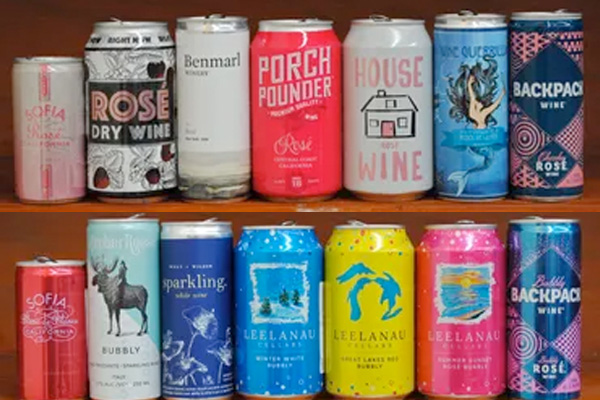Speaking from the OIV’s [International Organisation of Vine and Wine] headquarters in Paris, by web conference to over 3,000 international wine journalists, and trade, Director-General Pau Roca presented today [April 23, 2020] details of the 2019 wine production, consumption, and international trade. The impact of Covid-19 in the sector was also highlighted.
Here are the important facts and highlights of today’s Conference:
- The surface area of the world vineyard is estimated at 7.4 mha, which has been stable since 2016;
- World wine production is estimated at 260 mhl, a marked decrease, compared to 2018 historically high;
- World wine consumption is estimated at 244 mhl, marking a +0.1% with respect to the previous year;
- The world wine export market has expanded both in volume, estimated at 105.8 mhl (+1.7%), and in value with 31.8 bn EUR (+0.9%);
- 2020 Harvest – first estimates of wine production in the Southern Hemisphere indicate low expected volumes for 2020 (with the exception of South Africa and Uruguay).
Vineyard area stabilization
In 2019 the world area under vines, corresponding to the total surface area planted with vines for all purposes, including young vines not yet in production, is estimated 7.4 mha.
Starting with the Northern Hemisphere, overall stability can be observed in the European Union (EU) vineyards, which stands for the fifth consecutive year at 3.2 mha.
Within the EU, the latest available data for 2019 indicates an increase in the area under vines in France (794 kha), Italy (708 kha), Portugal (195 kha), and Bulgaria (67 kha). The vineyard surface area in Spain (966 kha), Hungary (69 kha) and Austria (48 kha), on the other hand, slightly decreased from 2018.
In East Asia, after over 10 years of significant expansion, the growth of Chinese vineyard (855 kha), second in the world by surface area just behind Spain, seems to be slowing down.
In the United States, the vineyard has been consistently decreasing since 2014, and its estimated surface area in 2019 is 408 kha.
In South America, developments in vineyard surface area between 2018 and 2019 showed a downward trend for the fourth year in a row.
The only exception in the continent is represented by Peru that increased by 7.1 kha (+17% / 2018) its vineyard surface area reaching 48 kha.
South Africa’s vineyard surface area remained stable with respect to 2018, at 128 kha.
Australia the area under vines remained stable at 146 kha in 2019; while New Zealand the surface area grew by 1.6 % reaching a record-high of 39 kha.
Production back to the average
World wine production, excluding juices and musts, in 2019 is estimated at 260 (259,0) mhl, marking a sharp decrease of 35 mhl (-11.5%) with respect to the exceptionally high volume recorded in 2018. Overall, after two consecutive years that can be defined as extremely volatile, 2019 brings global wine production back to average levels.
Italy (47.5 mhl), France (42.1 mhl), and Spain (33.5 mhl), which together account for 48% of world wine production in 2019, saw a sharp decrease in their wine production with respect to 2018.
Other EU countries that registered a decrease in production with respect to 2018 are Germany (9.0 mhl, -12%), Romania (5.0 mhl, -4%), Austria (2.5 mhl, -10%), Hungary (2.4 mhl, -34%) and Greece (1.9 mhl, -8%). The only EU country that, in 2019, saw an increase in its wine production is Portugal with 6.7 mhl (+10% / 2018).
In Eastern Europe, weather conditions were favourable in Russia (4.6 mhl, +7% / 2018) and Ukraine (2.1 mhl, +6% / 2018), while in Moldova the harvest was less abundant in 2019 and the vinified production was equal to 1.5 mhl (-23% / 2018).
In Asia, the new data available for China indicate an estimated vinified production of 8.3 mhl in 2019, marking a decrease of -10% with respect to the already relatively low production level of 2018.
In North America, wine production in the USA is estimated at 24.3 mhl, a decrease of 2% compared to 2018. This slight decline in 2019 does not depend on bad weather conditions or the raging fires that occurred in California (harvest was just before), but it is a response to overcome an oversupply of grapes and wine.
In South America, the overall trend for wine production in 2019 is negative with respect to 2018. However, while in Argentina (13.0 mhl) and in Chile (12.0 mhl) 2019 vinified productions are lower with respect to 2018 but overall in line or even higher than their five-year averages, Brazil (2.0 mhl) registered a sharp decrease in its wine production in 2019 of more than 1 mhl (-34% / 2018).
In South Africa, 2019 production reached 9.7 mhl. This represents an increase of +3% with respect to the low volume registered in 2018, but it is still far from the average production levels recorded before the beginning of the drought that heavily impacted the country for three years in a row (2016, 2017 and 2018).
With regard to Oceania, Australian wine production registers a decline for the second consecutive year reaching 12.0 mhl in 2019 (-6% / 2018). In New Zealand wine production was 3.0 mhl in 2019, a slight decrease of -1% with respect to 2018.
Expansion of the international trade of wine
In 2019 the world wine export market – considered here as the sum of the exports of all countries – has expanded with respect to 2018 both in volume, estimated at 105.8 mhl (+1.7%), and in value, with 31.8 bn EUR2 (+0.9%).
Strong increases can be observed in exports from Italy (+2.0 mhl), Spain (+1.3 mhl), Canada (+0.4 mhl) and Chile (+0.3 mhl). However, significant reductions in exports are recorded for Australia (-1.1 mhl), South Africa (-1.0 mhl), Ukraine (-0.4 mhl) and Hungary (-0.3 mhl).
In 2019 the global value of wine exports is on the sustained growth path started in 2010 reaching a new record high. France was still the most important world exporter in terms of value, with 9.8 bn EUR exported in 2019. There were rises in the value of exports in many large exporting countries like France (+425 m EUR), Italy (+211 m EUR), and New Zealand (+84 m EUR). The largest declines include Spain (-234 m EUR) and South Africa (-73 m EUR).
In 2019 the international trade of wine in terms of volume was mainly dominated by three European countries – Italy, Spain, and France – that together exported 57.1 mhl, accounting for 54% of the world market.
In 2019 the top three importers in terms of volumes were Germany, the UK, and the USA, which together imported 40.4 mhl, reaching 38% of world total. These three countries represent 39% of the total value of world wine imports, reaching 11.9 bn EUR.
The first importer in 2019 is still Germany with 14.6 mhl, even if its wine import volume decreases by 0.6% compared to 2018.
China for the second consecutive year saw a significant decline in its imported volumes (-11% / 2018), reaching 6.1 mhl in 2019. In terms of value, the trend is similar, with an overall downfall of -9.7% compared to 2018, reaching 2.1 bn EUR. The only category that increased both its volume (+8%) and its value (+8%) is sparkling wine, although it represents only 2% of the total imported volume.
Early estimates of the 2020 harvest in the Southern Hemisphere
First estimates of wine production in the Southern Hemisphere indicate low expected volumes for 2020 for the majority of countries, with the exception of South Africa and Uruguay.
In 2020 a decline in production volumes in all South American countries, with the exception of Uruguay, are expected. In Argentina estimated production is 11.6 mhl (-11%), in Chile 10.5 mhl (-12%) and in Brazil 2.0 mhl (-1%), while in Uruguay 0.65 mhl (+11%).
South Africa seems to continue its recovery path from the drought and expects +5% with respect to last year, reaching 10.2 mhl.
In Oceania, Australia expects a lower production level in 2020 estimated at 11.5 mhl (-4%) due to drought and bushfires while in New Zealand (2.9 mhl, -2%) expectations on wine production are by and large in line with 2019, or just below.
These are preliminary estimates and should be interpreted with caution, given the current exceptional circumstances.
Impact of Covid-19 in the wine sector
At this early stage the information and statistical data available are insufficient to provide an accurate forecast and anticipate the scenario of the vitivinicultural sector in the future. However, due to communication with OIV members (“Member States”), the OIV has certain qualitative information at its disposal.
The feedback given by the Member States reflects a radical change or transfer between distribution channels. The expected overall balance is a decrease in consumption, a reduction in average prices, and therefore an overall decrease in total sales value, turnover, margins and finally profits of the wineries.
As far as exports are concerned, economies in recession are not a promising market to develop, and during this pandemic, the largest consuming countries have been the most affected. Trade flows may recover along with the economy, but some permanent changes could occur.
Alcohol consumption is also being debated. Messages on the positive effects of wine consumption are totally unacceptable and irresponsible.
The same applies to the issuing, under these circumstances, of general statements or biased messages that are the result of ideological concerns about wine consumption, such as abstention.
The OIV’s work follows the Strategic Plan approved by the General Assembly in October 2019 and covers a 5-year period until 2024. In the current context, the objectives and goals of the OIV go hand in hand with the needs that this crisis has highlighted.
The OIV is the intergovernmental organization of scientific and technical nature of recognized competence for its work concerning vines, wine, wine-based beverages, and other vine-based products. It is composed of 47 Member States. In the framework of its competence, the objectives of the OIV are as follows:
- to inform its members of measures whereby the concerns of producers, consumers and other players in the vine and wine products sector may be taken into consideration;
- to assist other international organizations, both intergovernmental and non-governmental, especially those that carry out standardization activities; and
- to contribute to international harmonization of existing practices and standards and, as necessary, to the preparation of new international standards in order to improve the conditions for producing and marketing vine and wine products, and to help ensure that the interests of consumers are taken into account.






